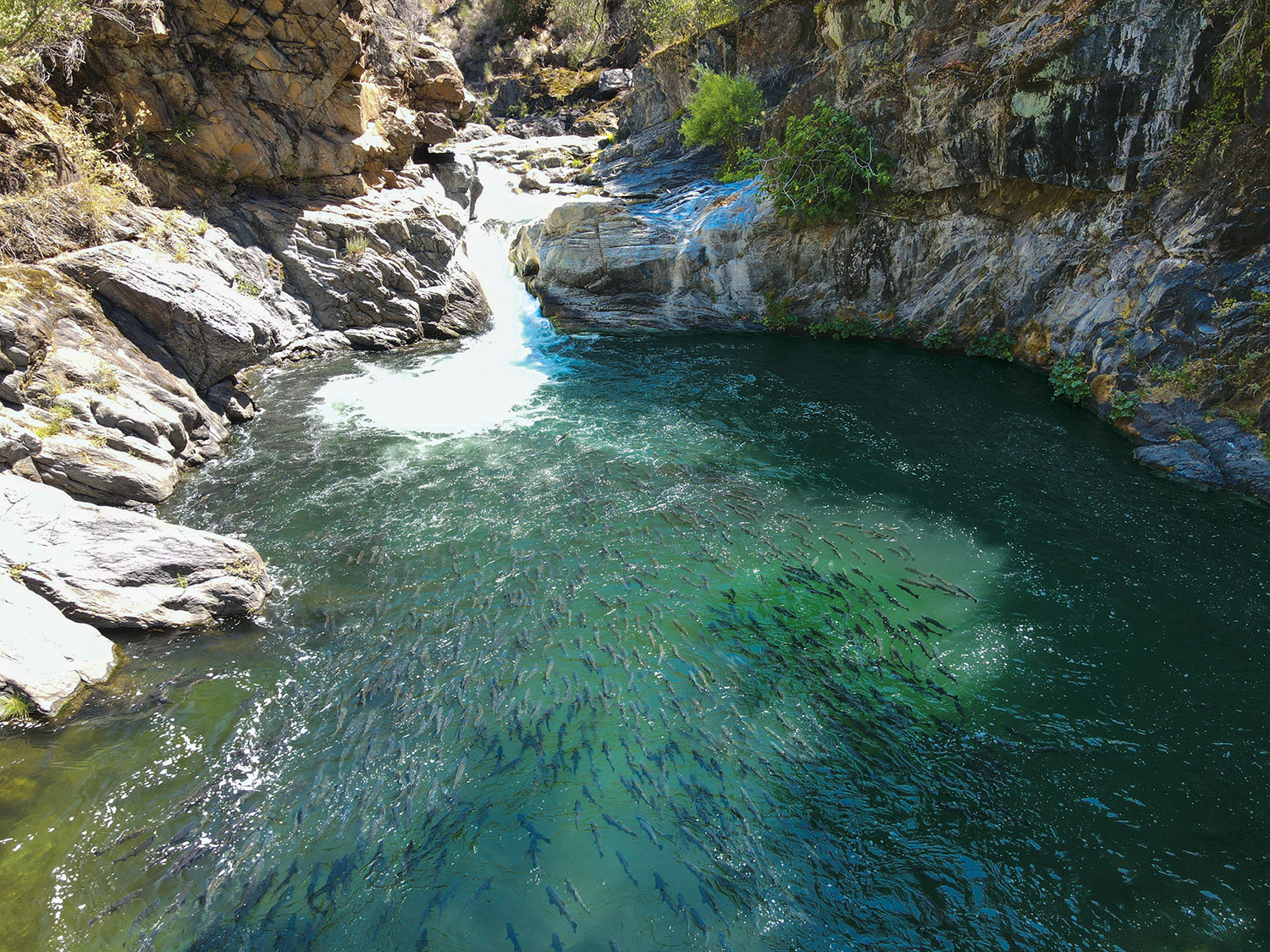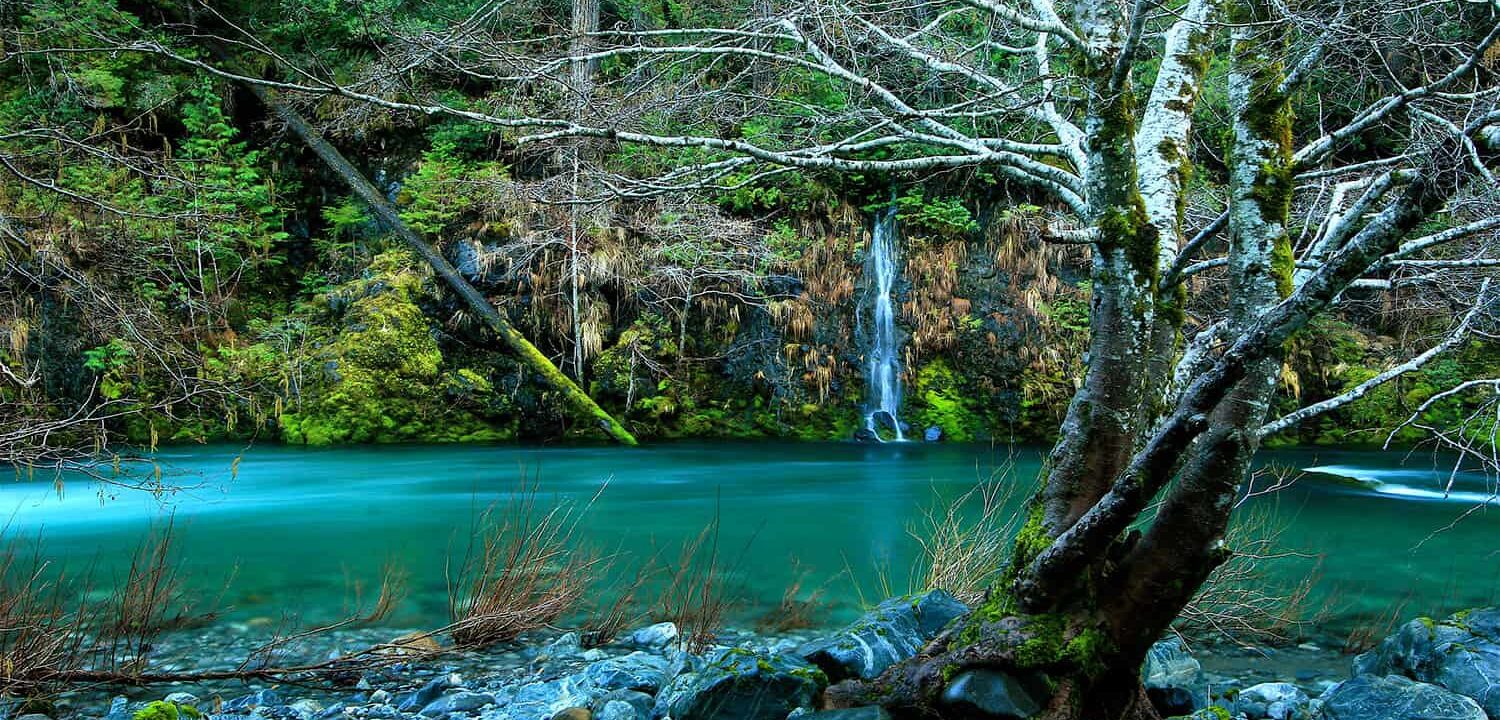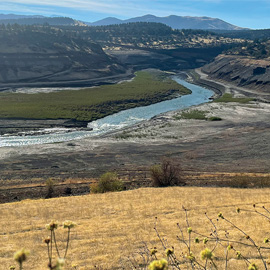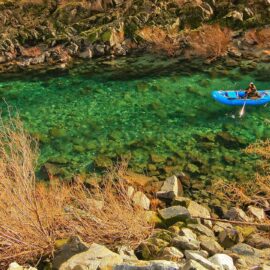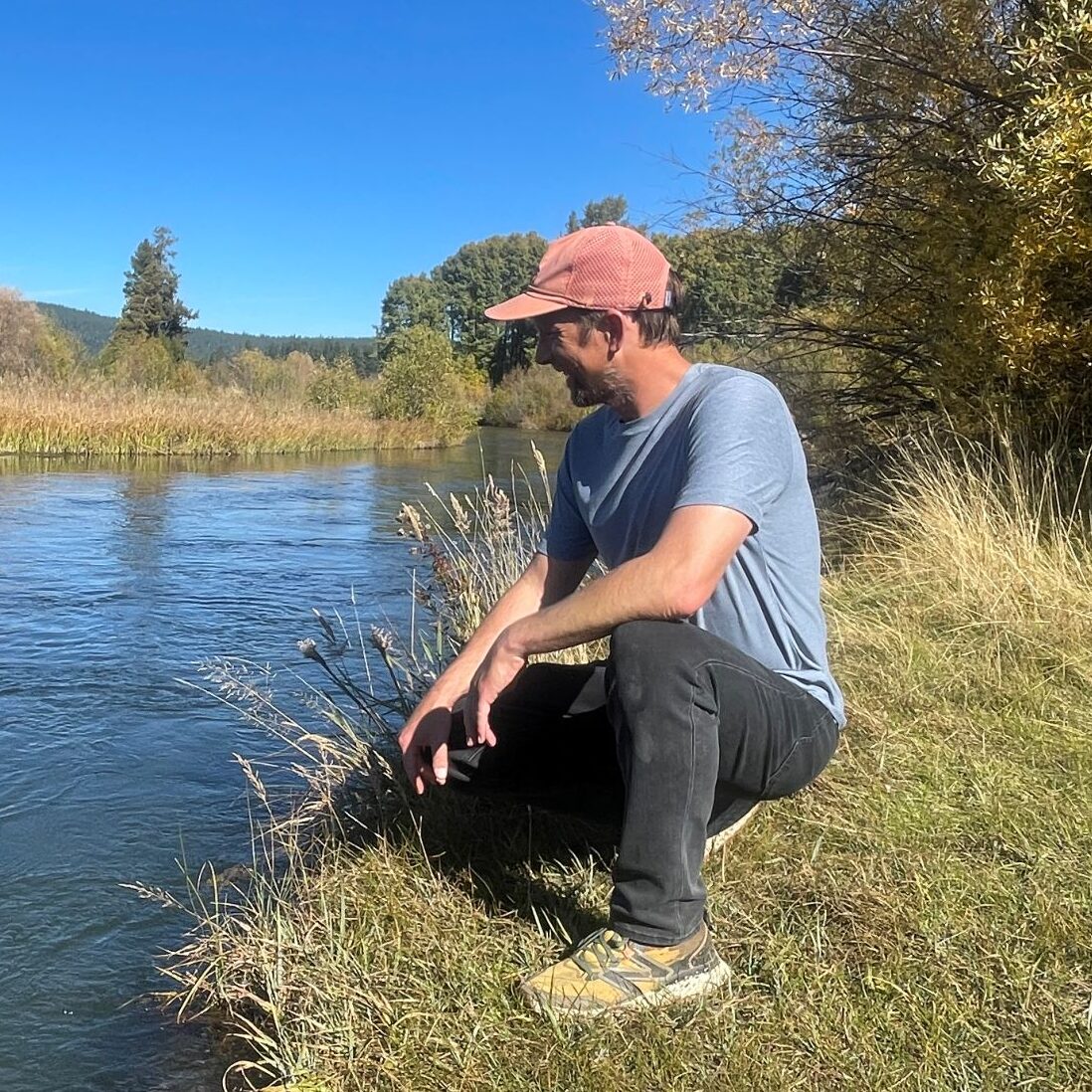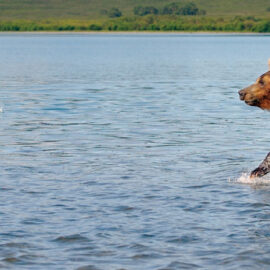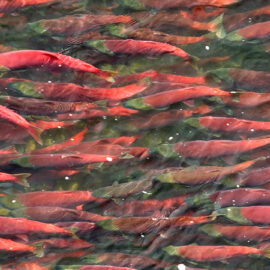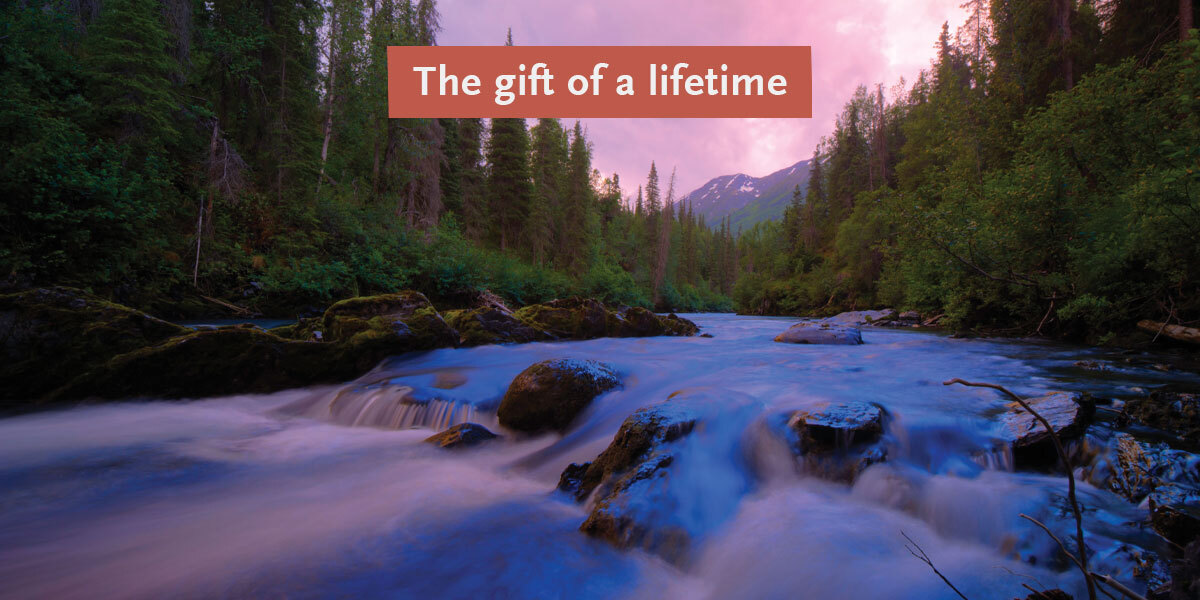Building back Golden State salmon
There is little question that California salmon and steelhead are in trouble. A recent study concluded that if fish population trends continue, 25 of the 32 distinct salmon, steelhead, and trout groups native to the Golden State may be extinct within the next century. But there is hope for California salmon and steelhead in select watersheds throughout the state, which still boast healthy wild salmon populations.
Restoring Spring Chinook to the Klamath
People in the Pacific Northwest love spring Chinook. All communities of fishers prize them for their fatty flavor. Tribal communities celebrate them with First Salmon rituals—marking the annual renewal of life-giving salmon runs. And because spring Chinook spawn and die in headwater streams, these fish deliver important nutrients high up in river systems.
Over the last several years, Wild Salmon Center has been closely involved with research that shows how spring Chinook are genetically unique from their fall run cousins. This has major implications for the Klamath River, where greater Chinook salmon diversity has been severely eroded by habitat destruction, disease, and drought. Various Klamath runs have dwindled to a few hundred fish.
Now, the largest dam removal project in history is underway in the Klamath, which brings fresh hope, and new questions, for its spring runs. With the dams finally coming down, how should spring Chinook be restored in this critical river system? Because genetically distinct spring Chinook can’t simply re-emerge from fall populations, we need to look at novel approaches.
WSC Science Director Dr. Matt Sloat is working with a newly formed team of Tribal, agency, and academic scientists to develop strategies to help Chinook recolonize historic spawning and rearing habitat in the upper Klamath. If successful, this recovery effort could benefit the entire region, from Northern California to Southern Oregon.
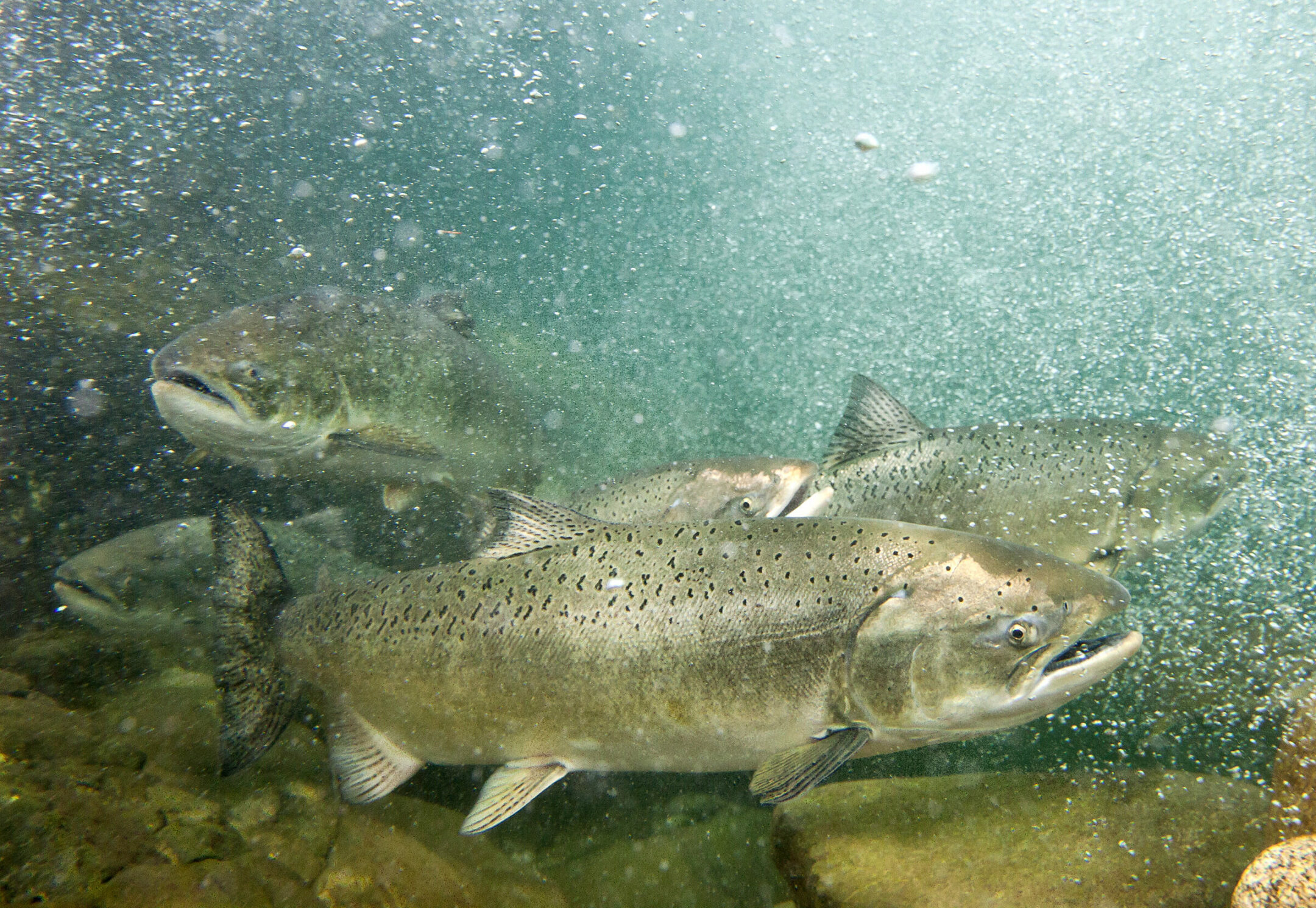
Butte Creek: California’s Secret Stronghold
High up in the western slopes of the Sierra Nevadas, a small Sacramento River tributary is a bright spot for salmon in California’s Central Valley.
Despite its size, Butte Creek boasts spring Chinook runs rivaling larger rivers like Oregon’s Rogue. This robustness is one reason why Sacramento springers overall are listed as a threatened species, rather than fully endangered.
A century ago, Central Valley rivers may have seen spring runs as large as 700,000 fish. In recent decades, good years rarely top 30,000 springers. Many of these fish are headed to Butte Creek.
“Butte Creek has benefited from strong local allies and the adaptive capacity of spring Chinook,” says Mark Trenholm, Wild Salmon Center’s Vice President of Conservation. “But its health won’t be secure without a long-term plan.”
That’s why WSC and the Friends of Butte Creek have convened a team of partners including Tribes and NGOs to protect Butte Creek. We aim to craft a comprehensive plan to restore critical river habitats, enhance fish passage, and secure reliable cold water flows for this small but mighty stronghold. Our hope is that with hard work, Butte Creek will continue to anchor the recovery of springers in the broader Sacramento.
